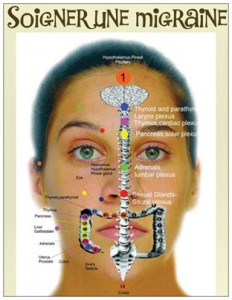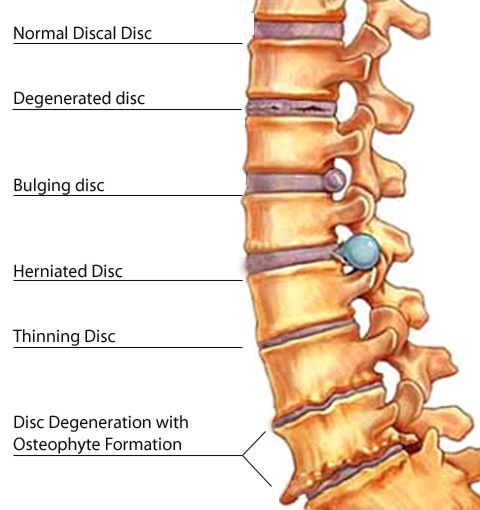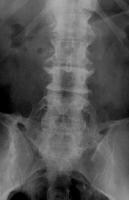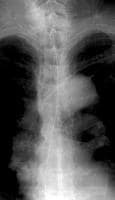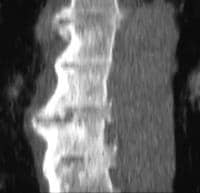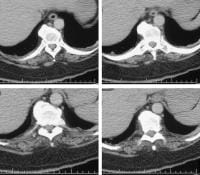I got an interesting mail.
Dear Ulla,
Thought you might like to see some Reflexology
Research showing
Reflexology being more effective than Ibuprofien for
specific type of pain & discomfort. Thanks to Nancy Bartlet for
providing this inforrmation to us.
Bill Flocco, Director. American Academy of Reflexology.
For a synopsis of
380 case, clinical and controlled Reflexology Research Studies go to:
www.ReflexologyResearch.net
Iran J Nurs Midwifery Res. 2010 December; 15(Suppl1): 371-378. PMCID: PMC3208937
Comparing
the effects of reflexology methods and Ibuprofen administration on
dysmenorrhea in female students of Isfahan University of Medical
Sciences
ABSTRACT
BACKGROUND: Dysmenorrhea or menstrual pain is one of the most
common disorders experienced by 50% of women in their reproductive age.
Adverse effects of medical treatments and its failure rate of 20-25%
have caused many women to seek other complementary and alternative
treatment methods for primary dysmenorrhea. Hence, this study aimed to
compare and determine the efficacy of reflexology and Ibuprofen on
reduction of pain intensity and duration of menstrual pain.
METHODS: This
was a quasi-experimental clinical trial study on 68 students with
primary dysmenorrhea living in Isfahan University of Medical Sciences'
dormitories. Simple random sampling was done considering the inclusion
criteria and then the students were randomly divided into two groups. In
the reflexology group, the subjects received 10 reflexology sessions
(40 minutes each) in two consecutive mense cycles. The Ibuprofen group
received Ibuprofen (400 mg), once every eight hours for 3 days during 3
consecutive mense cycles. To assess the severity of dysmenorrhea,
Standard McGill Pain Questionnaire, visual analog scale (VAS) and pain
rating index (PRI) were used in this study.
RESULTS: Findings of the study showed that the two groups had no
statistically significant difference in terms of demographic
characteristics (p > 0.05). Reflexology method was associated with
more reduction of intensity and duration of menstrual pain in comparison
with Ibuprofen therapy. Independent and Paired t-test showed that there
was a significant difference in the two groups between intensity and
duration of menstrual pain using VAS and PRI in each of the 3 cycles
between reflexology and Ibuprofen groups (p < 0.05).
CONCLUSIONS: Considering
the results of the study, reflexology was superior to Ibuprofen on
reducing dysmenorrhea and its treatment effect continued even after
discontinuing the intervention in the third cycle. Therefore,
considering that reflexology is a non-invasive, easy and cheap
technique, it seems that it can replace anti-inflammatory drugs (NSAIDs)
to avoid their adverse side effects. |
| |
|
|
|
|
The study: (free text)
Dysmenorrhea
is a Greek term to describe painful uterine contractions during
menstruation and is one of the most common disorders in women.1
Dysmenorrhea is the most prevalent problem in women with different
intensities which involves 45 to 95% of women.2 The prevalence of
dysmenorrhea in Iran has reported as 74 to 86.1 percent.3 Dysmenorrhea influences the mental and physical health of women
particularly those who are not seeking healthcare and treatment. It is
estimated that annually 140 million work hours and school hours are
devastated due to symptoms associated with dysmenorrhea and the
financial costs of dysmenorrhea in U.S. is $ 2 billion per year, on the
other hand dysmenorrhea causes school absenteeism in 14 to 25 percent of
the students.4 Primary dysmenorrhea is considered as the major cause of
women absenteeism from the work which obviously reduces the quality of
life, daily activities and economic situation due to decreased working
hours, firing from work and increase of health care costs.3,5
There are there therapeutic approaches for the primary dysmenorrhea as the following:
1. Pharmacological approach 2. Non-pharmacological approach 3. Surgical approach.6
The
first-line medical treatment for primary dysmenorrhea is administration
of inhibitors of prostaglandin sysnthesis.4 These inhibitors should be
taken the day before or at the onset of pain and then every six to eight
hours to prevent the formation of prostaglandin byproducts. On the
other hand, consumption of non-steroidal anti-inflammatory drugs
(NSAIDs) is prohibited in patients with gastrointestinal problems or
those with bronchial sensitivity to aspirin. The side effects of these
types of drugs are nausea, indigestion, diarrhea, fatigue and etc.7
Therefore,
it seems necessary to provide a non-pharmacological method for such
patients who do not respond to medication or suffer from its side
effects and are not willing to consume drugs.8
Among these
methods, reflexology can be pointed out which is one of the
interventions in the manual therapy groups.9 Reflexology is not a new
method and its history goes back to at least 5000 years ago in China,
India and Egypt. Nearly 2330 years B.C. the primary scientific images of
the reflexotherapy was discovered in Ankhmahor's tomb (an Egyptian
physician) in Saqqara, Egypt; an image from two servants who were
working on hand and feet of two patients.10,11 In this technique, the
theory of association between the hands and feet and other parts of the
body through the energy lines or channels is introduced.12
Reflexology
is based on the principle that there are reflex areas in the hands and
feet which are in association with muscles, nerves, organs, glands and
bones. Specific pressure on specific reflex points would activate the
healing power and make balance in the body.13,14 This technique should
not be misinterpreted with massage. Reflexology is a form of pressure
which is often done on the feet. Because feet are the most sensitive
parts of the body and that is why they are considered as the best site
for implementing reflexology.15,16 Regular reflexology on the body can
relieve the anxiety, cause relaxation and preserve health.12
Kim
and Cho, conducted a study to determine the effects of foot reflexology
on premenstrual symptoms and dysmenorrhea in 40 female college students.
Mean score of premenstrual symptoms and dysmenorrhea pain reduced from
8.35 to 4.16 in the first menstrual cycle and to 3.25 in the second
menstrual cycle by foot reflexology. The results indicated that
implementing foot reflexology can be effective on reducing premenstrual
symptoms and dysmenorrhea in female students.17 Furthermore, a study by
Oleson and Flocco, aimed to determine the effects of ear, hand and foot
reflexology on the premenstrual symptom of 35 women. The results
indicated that there was a significant and considerable reduction in
premenstrual symptoms in those who were in the real reflexology group.18
Considering
this safe and non-invasive technique (manual therapy) and since
reflexology is a non-invasive, cost effective and a technique with
application of hand, it can be well implemented by a skilled midwife.19
Due to high prevalence and high loses resulted from dysmenorrhea among
the employees and students and due to reduction of the abilities of
women and selecting safer treatment alternatives, the researcher decided
to compare the efficacy of this technique with Ibuprofen on reducing
the intensity and duration of dysmenorrhea.
Methods
This study was a quasi-experimental clinical trial. The
study population included all the single female students living in the
dormitories of Isfahan University of Medical Sciences. Eighty people
with the primary dysmenorrhea who were diagnosed by accurate description
of their backgrounds and their families and also checklist, entered the
study and were randomly divided into two groups. Treatment with
Ibuprofen was implemented during three consecutive menstrual cycles and
the reflexology group during two consecutive menstrual cycles.
Reflexology was done for 20 daily sessions (40 minutes) on the study
subjects and in the third cycle no reflexology was done in order to
compare the durability of its effect with Ibuprofen drug.
The
inclusion criteria included: being single, age range of 18 to 25 years,
living in dormitories of Isfahan University of Medical Sciences,
suffering from the primary dysmenorrhea with regular menstrual cycles,
the pain should not be associated with non-menstrual pains, lack of
endometriosis in one or higher first grade relatives, lack of diagnosed
chronic diseases (diabetes, high blood pressure, cardiovascular or
pulmonary diseases and etc.) with body mass index (BMI) in the range of
19 to 26, and not employed.
The exclusion criteria included:
using pharmacological methods (hormonal and painkiller drugs except
Ibuprofen, herbal drugs) and non-pharmacological methods (such as heat
therapy, cryotherapy, massage and etc.), not participating the
reflexology sessions or lack of appropriate Ibuprofen use.
Sampling
was done in simple random sampling method considering the inclusion
criteria which they were randomly divided into two groups. Data
collection tool was a questionnaire consisted of three parts;
demographic characteristics, menstruation characteristics and
dysmenorrhea data, visual analog scale (VAS) and Pain Rating Index (PRI)
scales extracted from standard McGill pain scale which was completed
once before the intervention and three times after that by the study
subjects.
In the study subjects of reflexology group, by
assigning an appropriate time for implementing the technique ten days
before the probable menstruation time, reflexology was done for 20
minutes on each foot (totally 40 minutes) in 15 stages generally during
two consecutive days (1. Solar plexus, 2 & 3. Areas related to the
digestive viscera, 4. Pelvic area, 5. Pituitary, 5. Sinuses, 7. upper
and lower extremities, 8. Spinal cord, 9. Lungs, 10. Shallow chest area
[chests], 11 & 12. Back and waist areas, 13. Ovaries, 14. Uterus and
15. Fallopian tubes) and specific reflexology including the areas
related to dysmenorrhea including liver, spleen, the kidneys, pituitary,
and the solar plexus. In order to investigate and follow-up the
durability and lasting effects of reflexology at the third cycle,
intervention was not implemented, but the questionnaire was completed
again by the study subjects of this group. In the Ibuprofen group, in
each cycle, a pack of ibuprofen capsules (10 capsules) with the
medication orders (one day before menstruation and the first two days of
menstruation, one capsule every 8 hours after the meal) were given to
the study subjects during three consecutive cycles. At the end of each
cycle, the questionnaires were gathered and then the next questionnaire
and capsules for the next cycle were given to them. At the end, the
subjects who used drugs irregularly were excluded from the study.
8
subjects from the reflexology group (1 student due to diagnosis of
ovarian cysts during the intervention, 4 due to using drugs and 3 due to
lack of co-operation) and 4 subjects from the Ibuprofen group (due to
inappropriate use of the drug) were excluded from the study. Finally, 68
subjects (32 in the reflexology group and 36 subjects in the Ibuprofen
group) were left in the study. The collected data were statistically
analyzed using independent and paired t-tests by SPSS software version
16.
Results
The mean age of the participants was 21.6 ± 1.79 years
(mean ± SD). All the study samples used to take some techniques to
relief their pain and most of them consumed NSAIDs. The BMI of the study
subjects was in the normal range (19-26). Frequency distribution of
their academic field of study showed that most of the participants were
educating in sub branches of paramedical science (56 subjects or 82.4%)
and the rest were educating medical courses (17.6%). In terms of
educational degree of the study subjects, 48 had BS (70.6%), 5 had MSc
(7.4%) and the rest had PhD (22.1%).
Mean and frequency
distribution of menarche age of the study subjects were 13.4 and 1.21
years, respectively. Comparing the two groups using independent t-test
and chi-square test before the intervention showed no significant
difference between the two groups in terms of demographic
characteristics (age, field of study and degree) and menstrual
characteristics (duration of bleeding, interval between the menstrual
periods, rate and volume of bleeding, pain onset and pain site).
Mean
pain intensity are shown based on VAS and PRI in the reflexology and
Ibuprofen groups before and after the intervention in each of the three
menstrual periods. In a comparison which was done before and after the
intervention in both groups, paired t-test showed that mean pain
intensity using VAS had a significant difference after the intervention
in each reflexology and Ibuprofen groups in all three periods (p <
0.001). These results indicated that mean pain intensity based on VAS in
each group was reduced in comparison with before the intervention.
Comparing
the two groups in terms of mean intensity of pain with VAS in the first
(1), second (2) and third (3) menstrual periods using independent
t-test indicated a significant statistical difference between the two
groups with (t1 = 2.983; p1 = 0.004) , (t2 = 5.07; p2 < 0.001) and
(t3 = 4.08; p3 < 0.001), respectively (Table 1).
Table 1
Comparing the mean pain intensity using VAS scale in the study subjects of the both groups before and after the intervention
Furthermore,
comparing the two groups in terms of total score of pain rating index
(PRI) after the intervention in the first, second and third menstrual
periods showed a significant difference with (t1 = 2.30; p1 = 0.024),
(t2 = 3.58; p2 = 0.001) and (t3 = 3.89; p3 < 0.001), respectively
(Table 2).
Table 2
Comparing the mean PRI score in the study subjects of the both groups before and after the intervention
Paired
t-test showed that total pain index score before and after the
intervention in each reflexology and Ibuprofen group in each three
periods had a significant difference (p < 0.001). These results
indicated that total pain index score had reduced in both groups
compared to before the intervention.
Moreover, PRI in each of the sensory, emotional, assessment or cognitive and other pains dimensions were assessed separately.
Mean
score of sensory pain dimension in McGill questionnaire (with 0 to 42
scores), in the reflexology group reduced from 17.31 before the
intervention to 8.46 after the first menstrual cycle, 6.71 after the
second cycle and 5.18 after the third cycle. This number also decreased
in the Ibuprofen group from 17.38 before the intervention to 12.36,
12.22 and 11.58, respectively. comparing the two groups in terms of
sensory pain dimension score through independent t-test before the
intervention showed no significant difference between the two groups (t =
0.04; p = 0.968); however, after the intervention comparing the two
groups in each of the first, second and third periods showed a
significant difference (t1 = 2.02; p1 = 0.047) (t2 = 2.85; p2 = 0.006)
and (t3 = 3.78; p3 < 0.001) respectively.
Furthermore, in a
comparison by paired t-test which was carried out before and after the
intervention in each group, in terms of sensory pain dimension score in
each the first, second and third periods showed that there was a
significant difference between pain intensity before and after the
intervention in each of reflexology and Ibuprofen groups (p < 0.05).
Mean
score of emotional pain dimension in McGill questionnaire (score 0 to
140), in the reflexology group reduced from 6.31before the intervention
to 2.21 at the first period, 1.59 at the second period and 1.09 at the
third period. The scores of this dimension in the Ibuprofen group also
decreased from 6.91 to 4.19, 3.80 and 3.13 at the first, second and
third periods, respectively. Comparing the two groups by independent
t-test before the intervention showed that there was no difference
between the two group in terms of emotional pain dimension score (t =
0.753; p = 0.454), but after the intervention, comparing pain intensity
in the emotional dimension showed a significant difference in the two
studied groups in each three menstrual cycles (t1 = 2.81, p1 = 0.006)
(t2 = 3.89; p2 < 0.001) and (t3 = 3.49; p3 = 0.001), respectively.
Mean
score of cognitive pain dimension in McGill questionnaire (scores 0 to
5) in the reflexology group was 3.50 before there intervention and
reduced to 1.40 at the first period, 1.21 at the second period and 1.09
at the third period. In the Ibuprofen group also these scores reduced
from 3.05 before the intervention to 1.75, 2.0 and 1.52 at the first,
second and third periods, respectively.
Comparing the two groups
by independent t-test before the intervention showed that there was no
difference between the groups in terms of cognitive pain dimension score
(t = 1.232; p = 0.220), but after the intervention, comparing pain
intensity in the cognitive dimension showed a significant difference in
the two studied groups in each three menstrual cycles as (t1 = 2.64, p1 =
0.02) (t2 = 3.01; p2 < 0.01) and (t3 = 3.43; p3 = 0.008),
respectively.
Mean score of other pain dimension in McGill
questionnaire (various and different pain dimension, scores 0 to 17) in
the reflexology group reduced from 6.84 before the intervention to 3.15
at the first period, 1.84 at the second period and 1.68 at the third
period. The scores of this dimension in the Ibuprofen group reduced from
6.83 to 4.41, 4.66 and 4.05 at the first, second and third menstrual
periods, respectively. Comparing the groups by independent t-test before
the intervention showed that there was no difference between the two
groups in terms of other pain dimension score (t = 0.012; p = 0.990),
but after the intervention, comparing pain intensity in the other
dimension showed a significant difference in the two studied groups in
each three menstrual cycles respectively as (t1 = 1.78, p1 = 0.008) (t2 =
3.91; p2 < 0.001) and (t3 = 3.73; p3 < 0.001).
Moreover,
in a comparison which was done separately in each group, a significant
difference between the pain intensity in other dimension was indicated
at the first, second and third menstrual periods in each of the
reflexology and Ibuprofen groups (paired t-test, p < 0.05).
Mean
duration of menstrual pain in the reflexology group reduced from 32.46
hours before the intervention to 15.90 hours at the first period, 14.86
hours at the second period and 9.78 hours at the third period. In the
Ibuprofen group also, mean pain duration reduced from 36.19 hours to
26.19 hours at the first period, 23.91 hours at the second period and
23.41 hours at the third period.
The results of independent
t-test indicated that mean duration of menstrual pain in the two groups
had no difference before the intervention (t = 0.677; p = 0.501).
Whereas, after the intervention, both groups had a significant
difference in each three periods in terms of mean duration of menstrual
pain respectively as (t1 = 2.227; p1 = 0.029) (t2 = 2.67; p2 = 0.005)
and (t3 = 2.98; p3 = 0.004). In a comparison that was done before and
after the intervention in each group, paired t-test showed that in each
first, second and third periods, there was a significant difference
between mean duration of menstrual pain before and after the
intervention in each of reflexology and Ibuprofen groups (p < 0.05).
Discussion
Findings
of the present study showed that intensity and duration of menstrual
pain using VAS and PRI and separately by sensory, emotional, cognitive
and other pain dimensions in each reflexology and Ibuprofen groups had a
significant difference before and after the intervention. Comparing the
two groups showed that reflexology was more effective than Ibuprofen in
reducing pain intensity and duration.
Kim and Cho, confirmed the
effect of reflexology in relieving menstrual pain. In this study,
implementing reflexology on the feet was done for 6 sessions in each
menstrual period for two consecutive cycles. Mean pain score with VAS
scale was 8.35 which reduced to 4.16 at the first menstruation and 3.25
at the second menstruation after the foot reflexology.17
In
addition, in the study of Oleson and Flocco, the effect of reflexology
was confirmed. In this study, study subject s randomly were divided into
true and false reflexology groups and the results showed a significant
reduction in premenstrual symptoms in the true reflexology group that
the durability of the treatment also remained up to 8 weeks after the
intervention (p < 0.001).18
In the present study, the effect
of reflexology at the second cycle was better than the first cycle; so
that there was more reduction in mean pain intensity via VAS and PRI.
Many
different studies investigated about different complementary medicine
methods. In the study of Wong et al the effect of acupressure on the
splenic point VI (SP6) or San Yin Jiao on menstrual distresses was
evaluated. The results indicated a significant reduction in pain
intensity score by VAS scale (p = 0.003) and short form of McGill
questionnaire (p = 0.002) immediately after acupressure for 20 minutes.
The subjects of the acupressure group also statistically showed a
significant difference at the third menstrual period with each one of
the scales.20 It seems that these techniques (acupuncture, acupressure,
reflexology and etc.) have more durability than non-steroidal
anti-inflammatory drugs such as Ibuprofen which needs repetition of the
drug dosage in each menstrual period.
In this regard, Iorno et al
in a study titled as "Acupuncture treatment of dysmenorrhea resistant
to conventional medical treatment" on 15 women with mild to severe
dysmenorrhea showed that response to was observed in 13 subjects (87%)
and this difference was significant than before the study (p <
0.001). The follow-up of the patients showed that the pain of almost 50%
of them had been controlled to six months after the treatment.21
Furthermore,
the study results of Ghasemi, showed that intensity of dysmenorrhea had
a significant reduction after massage therapy in comparison with before
the intervention (p < 0.001). The results indicated that the effect
of massage therapy on pain intensity was stable even six weeks after the
intervention (p < 0.001).22
The results of a study by
Aghamiri et al in 2005 titled as "study of effect of acupressure methods
on pain in primary dysmenorrhea" on 100 students girls with primary
dysmenorrhea in the dormitory showed that there was a significant
difference between mean pain intensity before and after the intervention
in the case group (70% reduction). Moreover, the study results showed
that there was a significant difference between mean pain intensity
before and after the intervention in the two case and placebo groups (p
< 0.001).23
In the present study, the effect of reflexology on
reducing the pain intensity influence at the very first menstrual cycle
and Zhixing also in Traditional Chinese Medicine Hospital (Hangzhou) on
10 women with dysmenorrhea conducted the foot reflexology and found the
immediate effect of reflexology on pain relief in his study samples.
Only, three of them did respond to the treatment and required additional
treatment.24
Suhrabi et al conducted a study titled as "the
effect of acupressure in San Yin Jiao point and Ibuprofen on primary
dysmenorrhea" on 80 females college students. Comparing the results
showed that pain intensity after the treatment at the first and second
treatment in both groups had no significant difference, respectively as
(p = 0.073 and p = 0.328), but comparing pain intensity before and after
the treatment in the acupressure group (p < 0.001) and Ibuprofen
group (p < 0.001) illustrated a significant difference. In the
present study also, pain duration in each two groups and in each three
menstrual cycles showed a significant reduction.25
In addition,
comparing the two groups in terms of pain intensity score by independent
t-test in each one of the pain dimensions (sensory, emotional,
cognitive and others) showed that the two groups had no difference in
terms of pain intensity score in each sensory, emotional, cognitive and
others pain dimensions before the intervention, but after the
intervention, comparing the two groups in order to determine the most
effective method in each of the first, second and third menstrual
cycles, showed that reflexology group had a better performance than
Ibuprofen group (p < 0.05); in other words, this technique could be
more effective in emotional and cognitive dimensions than the
pharmacological method and it had more score reduction in other
dimensions.
Perhaps, more reduction of emotional dimension score
in the reflexology group was due to more presence of the researcher
along with study samples; i.e. the subjects of this group during this 10
days of reflexology before incidence of menstruation felt the presence
of researcher with themselves and had more solace, and with expressing
their feelings and discharge their emotions could adopt themselves more
with this physiological phenomenon and maybe due to some reasons such as
increase in level of endogenous endorphins, their pain tolerance
threshold had increased more and felt less pain. Therefore, they chosen
better words to describe their pain or preferred not to choose a word in
some of the different pain dimensions subsets.
Although the
majority of the study subjects in their menstrual cycles used one or
more methods to reduce their menstrual pain, the results indicated that
duration and intensity of menstrual pain had reduced in comparison with
the time before the intervention. Overall, this study indicates that
implementing reflexology for 20 sessions during the two consecutive
cycles, 10 days before menstruation onset could reduce mean intensity
and duration of menstrual pain.
Therefore, it can be stated that
by conducting more studies about the effect of reflexology on other
groups with primary dysmenorrhea, this technique (which has been highly
ignored) can be applied easily, simple and cost-effectively. Appropriate
application of this technique can reduce the menstrual pain in those
with primary dysmenorrhea and consequently reduce medical techniques
such as different drugs like painkillers which unconsciously impose some
side effects to the individual. Application of different complementary
medicine methods such as reflexology technique that does not have any
side effects similar to chemical drugs and is a simple technique with
application of the hands, safer alternatives can be recommended to treat
dysmenorrhea to medical practitioners and those with dysmenorrhea.
The authors declare no conflict of interest in this study.
Acknowledgments
At
the end, our thanks go to Research Deputy of Isfahan University of
Medical Sciences and School of Nursing and Midwifery, director of
student accommodation and all the students who helped us in conducting
the present research.
References
1. Shah Hosseini Z, Amin GR, Salehi Sormaghi MH,
Danesh MM, Abedian K. Double blind study of anti-primary dysmenorrhea
effects of Vitagnus. Journal of Mazandaran University of Medical
Sciences. 2006;15(50):15-21. [In Persian]
2. Holtzman DA,
Petrocco-Napuli KL, Burke JR. Prospective case series on the effects of
lumbosacral manipulation on dysmenorrhea. J Manipulative Physiol Ther.
2008;31(3):237-46. [PubMed]
3. Dolatian M, Jafari HNV, Afrakhteh M,
Taleban FA, Gachkar L. Effects of fish oil on primary dysmenorrhea.
Journal of Zanjan University of Medical Sciences. 2004;12(47):7-13. [In
Persian]
4. Ehrenthal D, Hoffman M, Hillard PA. Philadelphia: American College of Physicians; 2006. Menstrual disorders.
5. Arulkumaran S. New Delhi: Jaypee Brothers; 2005. Essentials of gynecology.
6. Dawood MY. Primary dysmenorrhea: advances in pathogenesis and management. Obstet Gynecol. 2006;108(2):428-41. [PubMed]
7.
Berek JS, Novak E. Berek and Novak's gynecology. In: Ghazijahani B,
Zonouzi A, Bahrami N, translators. 14th ed. Tehran: Gholban Arianteb;
2007. [In Persian]
8. Quinn F, Hughes CM, Baxter GD. Reflexology in
the management of low back pain: a pilot randomised controlled trial.
Complement Ther Med. 2008;16(1):3-8.
9. Wren KR, Norred CL. Philadelphia: Saunders; 2002. Complementary & alternative therapies.
10. Sahai I. Reflexology- A Second Look. 1996. [cited 2011 4 Feb]. Available from:
http://www.positivehealth.com/article/reflexology/reflexology-a-second-look .
11.
Ebadi MS. Pharmacodynamic basis of herbal medicine. In: Gholami A,
Abolhassanzadeh Z, Mohagegzadeh AA, translators. 2nd ed. Tehran: Rahe
Kamal: Choghan; 2007. [In Persian]
12. Tiran D, Mack S. Complementary
therapies for pregnancy and childbirth. In: Ragaei MA, Goheiri AA,
translators. Isfahan Kankash: Isfahan University of Medical Sciences;
2002. [In Persian]
13. Xavier R. Facts on reflexology (foot massage) Nurs J India. 2007;98(1):11-2. [PubMed]
14. Kuhn MA. Philadelphia: Lippincott Williams & Wilkins; 1999. Complementary therapies for health care providers.
15. Wright J. London: Churchill press; 2003. Reflexology and Acupressure: Pressure Points for Healing.
16. Pitman V, MacKenzie K. 2nd ed. Cheltenham: Nelson Thornes; 2002. Reflexology: a practical approach.
17.
Kim YH, Cho SH. The Effect of Foot Reflexology on Premenstrual Syndrome
and Dysmenorrhea in Female College Students. 2002;8(2):212-21.
18.
Oleson T, Flocco W. Randomized controlled study of premenstrual symptoms
treated with ear, hand, and foot reflexology. Obstet Gynecol.
1993;82(6):906-11. [PubMed]
19. Blunt E. Integrated healing: Foot Reflexology. Holistic Nursing Practice. 2006;5(6):257-9. [PubMed]
20.
Wong CL, Lai KY, Tse HM. Effects of SP6 acupressure on pain and
menstrual distress in young women with dysmenorrhea. Complement Ther
Clin Pract. 2010;16(2):64-9. [PubMed]
21. Iorno V, Burani R,
Bianchini B, Minelli E, Martinelli F, Ciatto S. Acupuncture Treatment of
Dysmenorrhea Resistant to Conventional Medical Treatment. Evid Based
Complement Alternat Med. 2008;5(2):227-30. [PMC free article] [PubMed]
22.
Ghasemi N. Isfahan: Isfahan University of Medical Sciences; 2008.
Effect of massage therapy on pain of endometriosis in women referred to
Isfahan infertility center [dissertation] [In Persian]
23. Aghamiri
Z, Vigeh M, Latifnezhead RSN. Study of effect of acupressure methods on
pain in primary dysmenorrhea. HAYAT. 2005;11(3&4):19-28. [In
Persian]
24. Bennett S. Published Research into Reflexology 2011. 2007. [cited 4 Sep]. Available from:
www.soothes.co.uk/.../reflexology_published_research.pdf .
25.
Suhrabi Z, Tadayon M, Javadifar N. Comparison of Pressure Effect on
Sanyinjiao Point with that of Ibuprofen on Primary Dysmenorrhea. Journal
of Ilam University of Medical Sciences. 2006;14(2):30-5. [In Persian]
Articles from Iranian Journal of Nursing and Midwifery Research are provided here courtesy of Medknow Publications
~~~~~~~~~~~~~~~~~~~~~~
[Preventive treatment of primary dysmenorrhea with ibuprofen]. [Ginecol Obstet Mex. 1998]
[Preventive treatment of primary dysmenorrhea with ibuprofen].
Pedrón Nuevo N, González-Unzaga M, Medina Santillan R. Ginecol Obstet Mex. 1998 Jun; 66:248-52.
Reviewing
the effect of reflexology on the pain and certain features and outcomes
of the labor on the primiparous women. [Iran J Nurs Midwifery Res.
2010]
Reviewing the effect of reflexology on the pain and certain features and outcomes of the labor on the primiparous women.
Valiani M, Shiran E, Kianpour M, Hasanpour M. Iran J Nurs Midwifery Res. 2010 Dec; 15(Suppl 1):302-10.
Ibuprofen therapy for dysmenorrhea. [J Reprod Med. 1978]
Ibuprofen therapy for dysmenorrhea.
Corson SL, Bolognese RJ. J Reprod Med. 1978 May; 20(5):246-52.
Herbal and dietary therapies for primary and secondary dysmenorrhoea. [Cochrane Database Syst Rev. 2001]
Herbal and dietary therapies for primary and secondary dysmenorrhoea.
Proctor ML, Murphy PA. Cochrane Database Syst Rev. 2001; (3):CD002124.
Nonsteroidal anti-inflammatory drugs for heavy menstrual bleeding. [Cochrane Database Syst Rev. 2000]
Nonsteroidal anti-inflammatory drugs for heavy menstrual bleeding.
Lethaby A, Augood C, Duckitt K. Cochrane Database Syst Rev. 2000; (2):CD000400.
See reviews... See all...
~~~~~~~~~~~~~~~~~~~~~~~~
Comparing the effects of reflexology methods and Ibuprofen administration on dys...
Comparing
the effects of reflexology methods and Ibuprofen administration on
dysmenorrhea in female students of Isfahan University of Medical
Sciences
Iranian Journal of Nursing and Midwifery Research. 2010 Dec; 15(Suppl1)371-378
PMC
~~~~~~~~~~~~~~~~~~~~~~~~
Prospective case series on the effects of lumbosacral manipulation on dysmenorrhea. [J Manipulative Physiol Ther. 2008]
Holtzman DA, Petrocco-Napuli KL, Burke JR
J Manipulative Physiol Ther. 2008 Mar; 31(3):237-46.
Review Primary dysmenorrhea: advances in pathogenesis and management. [Obstet Gynecol. 2006]
Dawood MY
Obstet Gynecol. 2006 Aug; 108(2):428-41.
Facts on reflexology (foot massage). [Nurs J India. 2007]
Xavier R
Nurs J India. 2007 Jan; 98(1):11-2.
Randomized controlled study of premenstrual symptoms treated with ear, hand, and foot reflexology. [Obstet Gynecol. 1993]
Oleson T, Flocco W
Obstet Gynecol. 1993 Dec; 82(6):906-11.
Foot reflexology. [Holist Nurs Pract. 2006]
Blunt E
Holist Nurs Pract. 2006 Sep-Oct; 20(5):257-9.
Randomized controlled study of premenstrual symptoms treated with ear, hand, and foot reflexology. [Obstet Gynecol. 1993]
Oleson T, Flocco W
Obstet Gynecol. 1993 Dec; 82(6):906-11.
Effects of SP6 acupressure on pain and menstrual distress in young women with dysmenorrhea. [Complement Ther Clin Pract. 2010]
Wong CL, Lai KY, Tse HM
Complement Ther Clin Pract. 2010 May; 16(2):64-9.
Acupuncture treatment of dysmenorrhea resistant to conventional medical treatment. [Evid Based Complement Alternat Med. 2008]
Iorno V, Burani R, Bianchini B, Minelli E, Martinelli F, Ciatto S
Evid Based Complement Alternat Med. 2008 Jun; 5(2):227-30.

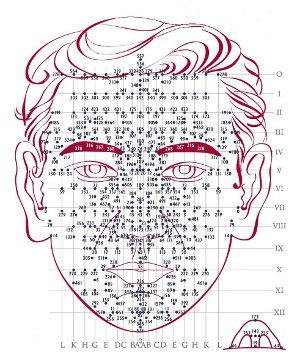
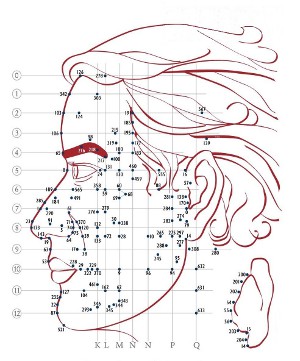



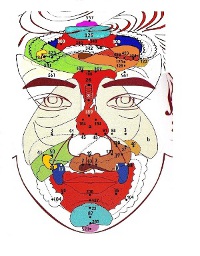

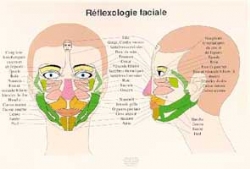 and
and 





